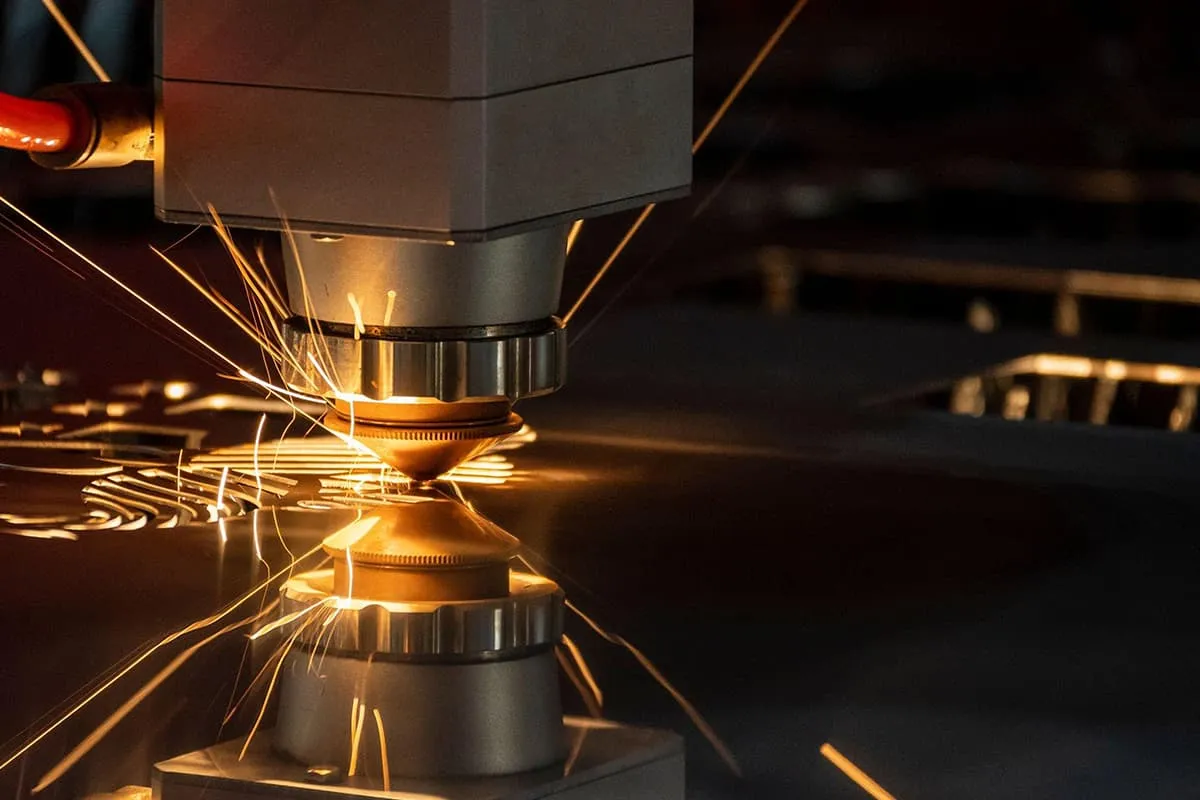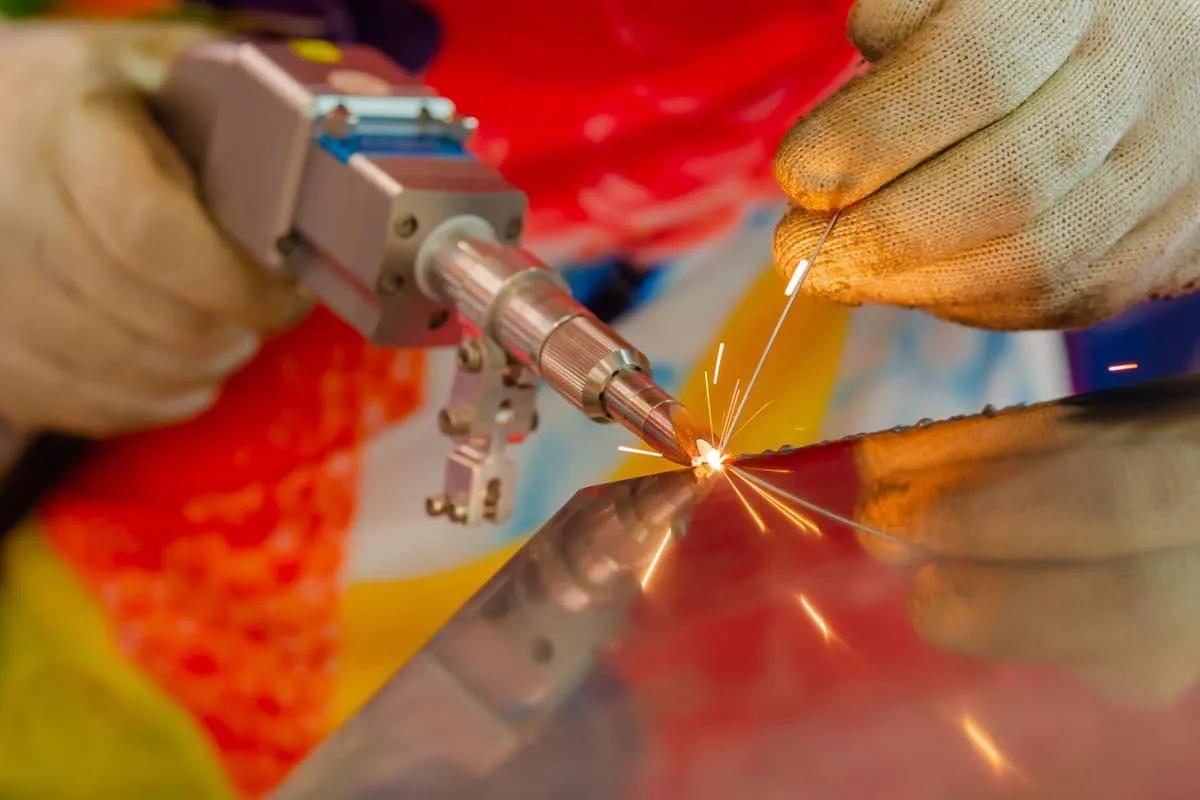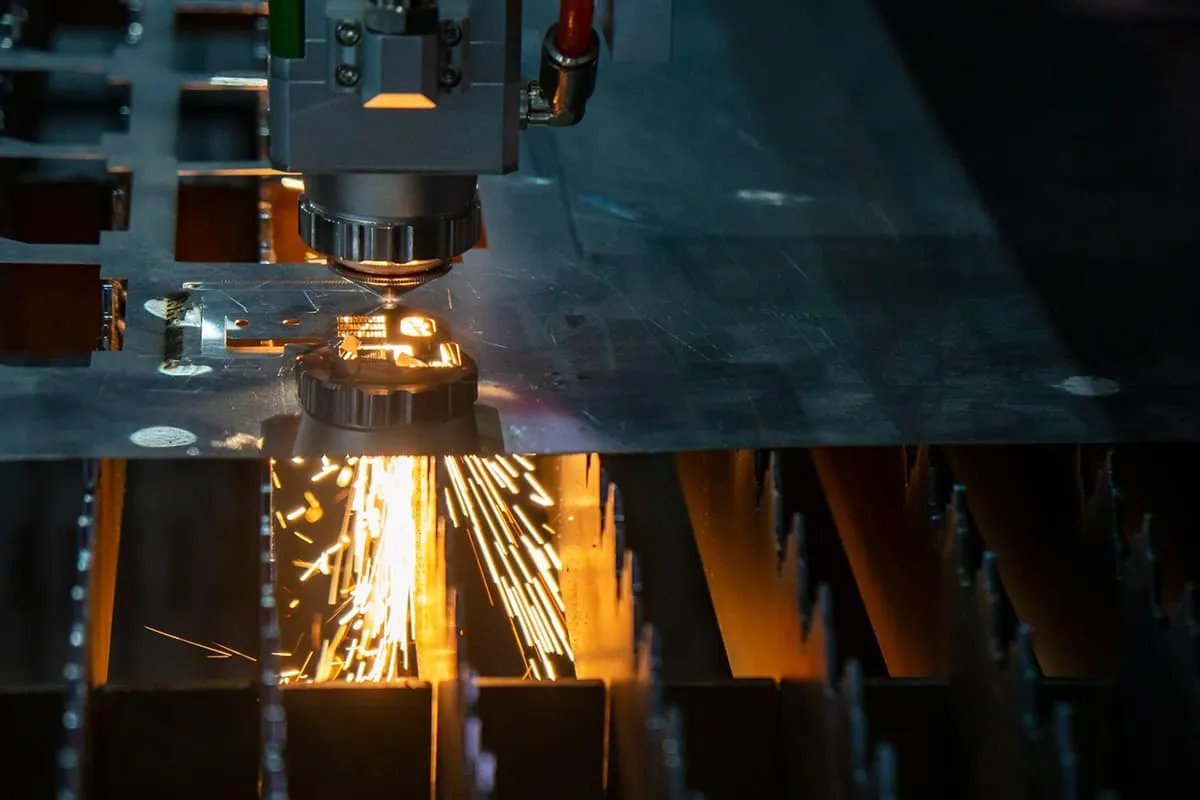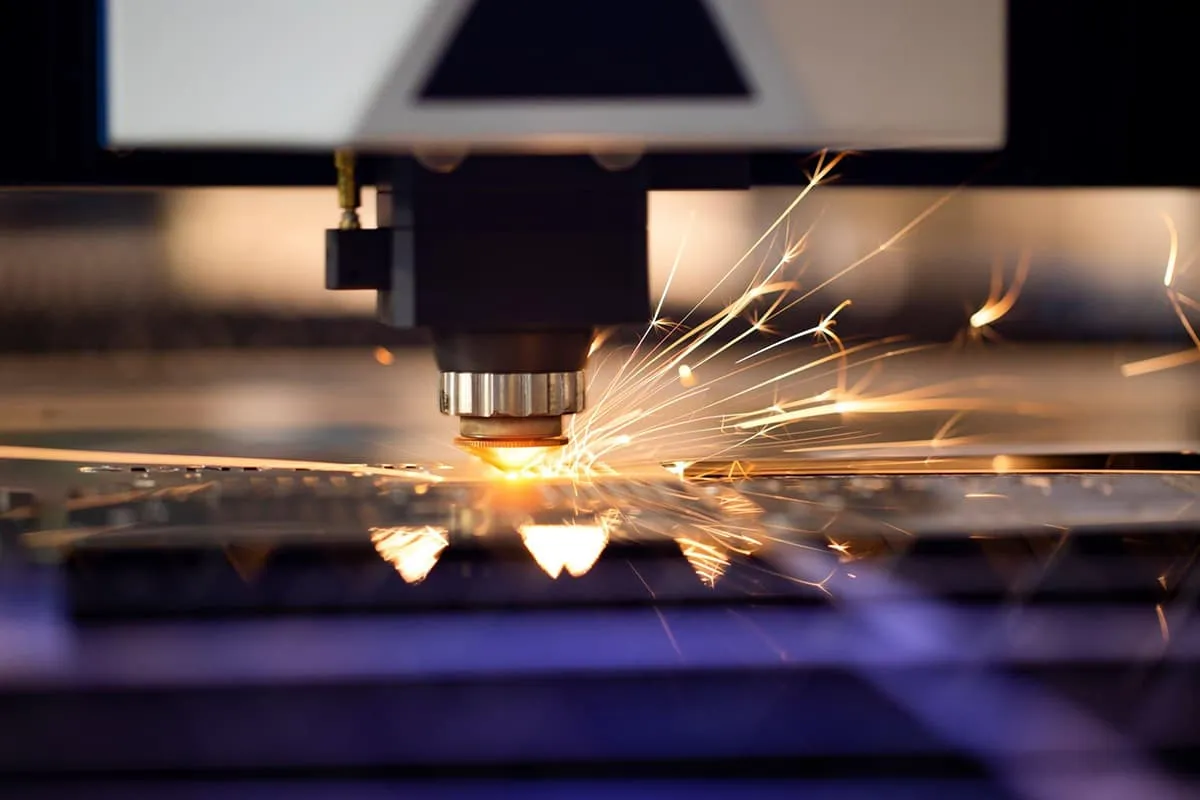
1. Superior Beam Quality and Precision
Fiber laser cutting machines offer significant advantages over traditional CO2 laser systems, particularly in beam quality and focus precision. The fiber laser’s inherent properties allow for a higher beam quality factor (M²), typically approaching near-diffraction-limited performance. This superior beam quality, combined with advanced beam delivery optics, enables the creation of a much smaller focus spot diameter—often less than 100 microns for thin materials.
The reduced spot size translates directly into several key benefits:
- Finer Cutting Kerf: The narrow, high-intensity beam produces exceptionally thin cutting widths, crucial for intricate designs and minimizing material waste.
- Enhanced Edge Quality: Sharper beam focus results in cleaner cut edges with minimal heat-affected zone (HAZ), reducing the need for secondary finishing operations.
- Improved Precision: Tighter focus control allows for cutting complex geometries and maintaining tight tolerances, often achieving accuracies within ±0.1 mm.
- Higher Energy Density: Concentrated energy enables faster cutting speeds, especially in thin to medium-thickness materials, boosting overall productivity.
- Versatility in Materials: The fiber laser’s shorter wavelength (typically 1064 nm) is more readily absorbed by metals, allowing efficient processing of reflective materials like copper and brass.
These characteristics make fiber laser cutting machines particularly well-suited for high-precision applications in industries such as aerospace, medical device manufacturing, and microelectronics, where component miniaturization and exacting specifications are paramount. The technology’s ability to deliver superior cut quality while maintaining high processing speeds represents a significant advancement in laser cutting capabilities.
2. Enhanced cutting speed and superior processing efficiency
Fiber laser cutting machines demonstrate significantly higher cutting speeds and processing efficiencies compared to their CO2 counterparts of equivalent power output. Typically, fiber laser systems achieve cutting speeds up to two to three times faster than CO2 lasers, particularly when processing thin to medium-thickness materials.
This superior performance is attributed to several factors:
- Wavelength advantage: Fiber lasers operate at a shorter wavelength (around 1.064 μm) compared to CO2 lasers (10.6 μm), allowing for better absorption by metals and resulting in more efficient energy transfer.
- Beam quality: Fiber lasers produce a higher-quality beam with a smaller focal spot size, enabling more concentrated energy delivery and faster cutting speeds.
- Higher power density: The ability to focus the beam into a smaller spot allows fiber lasers to achieve higher power densities, facilitating rapid material removal.
- Reduced heat-affected zone (HAZ): The precise energy delivery of fiber lasers minimizes thermal distortion and results in cleaner cuts with narrower kerfs.
- Lower maintenance requirements: Fiber lasers have fewer moving parts and require less maintenance, contributing to increased uptime and overall productivity.
For instance, when cutting 1mm mild steel, a 4kW fiber laser can typically achieve cutting speeds of 20-25 m/min, while a CO2 laser of the same power might only reach 10-12 m/min. This efficiency advantage becomes even more pronounced with reflective materials like aluminum or copper, where fiber lasers excel due to their superior absorption characteristics.
However, it’s important to note that the exact performance gain varies depending on the material type, thickness, and specific cutting parameters. While fiber lasers generally outperform CO2 lasers in thin to medium-thick materials, CO2 lasers may still hold advantages in certain applications, particularly when cutting thicker materials or non-metals.

Comparison Diagram of Cutting Speed
3. Superior Equipment Stability
Fiber lasers employ semiconductor modularization and redundancy design, eliminating the need for optical lenses within the resonant cavity. This design innovation results in instant start-up capability, a significant advantage over traditional lasers.
When compared to CO2 lasers, fiber lasers offer unparalleled benefits in terms of operational simplicity and reliability. They require no adjustments or maintenance, and their inherent stability surpasses that of other conventional laser systems. This robustness translates to reduced downtime and lower operational costs in industrial applications.
High-quality fiber lasers demonstrate exceptional performance stability over time. The longevity of critical components is remarkable, with many key elements designed to operate for up to 100,000 hours. This extended lifespan contributes to the overall cost-effectiveness and reliability of fiber laser systems in demanding manufacturing environments.
The stability of fiber lasers is further enhanced by their solid-state design, which minimizes the impact of environmental factors such as temperature fluctuations and vibrations. This characteristic makes them particularly suitable for precision cutting, welding, and other metal fabrication processes where consistent output is crucial for maintaining product quality.
4. Superior Photoelectric Conversion Efficiency
Fiber laser cutting machines boast a remarkably high photoelectric conversion efficiency of approximately 30%, which is three times greater than that of traditional CO2 laser cutting systems. This significant improvement in energy conversion translates to multiple benefits in metal fabrication:
- Energy Efficiency: The higher conversion rate means more of the input electrical energy is transformed into usable laser energy, reducing overall power consumption.
- Cost Reduction: Lower energy requirements directly contribute to decreased operational costs, enhancing the economic viability of laser cutting processes.
- Environmental Impact: Improved energy efficiency results in a smaller carbon footprint, aligning with sustainable manufacturing practices and potentially meeting stricter environmental regulations.
- Heat Management: The increased efficiency reduces waste heat generation, minimizing thermal management challenges and potentially extending the lifespan of system components.
- Faster Processing: More efficient energy conversion can lead to higher available laser power, potentially increasing cutting speeds and throughput in production environments.
- Precision Cutting: The superior beam quality of fiber lasers, coupled with their high efficiency, enables more precise cuts, especially in thin to medium-thickness metals.
This enhanced photoelectric conversion efficiency, combined with other advantages of fiber laser technology, is driving the widespread adoption of fiber laser cutting machines in modern metal fabrication industries, offering a compelling balance of performance, economy, and environmental responsibility.

Photoelectric conversion rate comparison chart
5. Lower Operating and Maintenance Costs
The power consumption of a fiber laser cutting machine is significantly lower, typically only 20-30% of that required by a CO2 laser cutting machine. This substantial energy efficiency translates directly into reduced operating costs, making fiber laser systems more economical over their lifetime.
Additionally, fiber laser cutting machines offer further cost advantages through their simplified design:
- No laser working gas required: Unlike CO2 lasers, fiber lasers don’t need assist gases for beam generation, eliminating associated costs.
- Absence of complex beam delivery: Fiber lasers utilize flexible optical fibers for beam transmission, eliminating the need for mirrors and reducing alignment issues.
- Minimal optics: With fewer reflective lenses and optical components, maintenance requirements and replacement costs are greatly reduced.
The fiber laser’s robust design requires only basic environmental controls:
- A temperature and humidity-controlled workspace is sufficient for optimal performance.
- A closed-loop cooling system using clean distilled or deionized water ensures stable laser output and extends component life.
This streamlined architecture results in remarkably simple maintenance procedures. Routine tasks typically involve:
- Regular inspection of focusing lenses and protective windows
- Cleaning of the cutting head and nozzle
- Monitoring and replenishment of the cooling system
The combination of energy efficiency, reduced consumables, and simplified maintenance makes fiber laser cutting machines highly cost-effective in both short-term operations and long-term ownership.

Use Cost Comparison Chart
6. Simplified Light Path and Enhanced Operational Convenience
Fiber laser cutting machines offer significant advantages over traditional CO2 laser systems in terms of light path simplicity and operational ease. The entire optical path in fiber laser cutting machines is transmitted through optical fibers, eliminating the need for complex light guide systems such as mirrors and beam delivery optics commonly found in CO2 lasers.
This streamlined optical path design brings several key benefits:
- Simplified Structure: The use of flexible optical fibers allows for a more compact and straightforward machine layout, reducing the overall footprint and complexity of the system.
- Enhanced Stability: With fewer optical components and no need for precise mirror alignments, fiber laser systems exhibit superior stability, maintaining consistent cutting performance over extended periods.
- Reduced Maintenance: The simplified optical path significantly decreases the number of components requiring regular adjustment or replacement, leading to lower maintenance costs and reduced downtime.
- Improved Beam Quality: Fiber-delivered lasers maintain excellent beam quality over long distances, ensuring consistent cutting performance across the entire work envelope.
- Increased Energy Efficiency: The direct fiber delivery system minimizes power losses typically associated with multiple reflections in mirror-based systems, resulting in higher overall energy efficiency.
- Enhanced Flexibility: The flexible nature of optical fibers allows for easier integration of the laser source into various machine configurations, including gantry systems and robotic arms.
These advancements in fiber laser technology translate to more reliable operation, reduced maintenance requirements, and improved overall productivity in metal cutting applications.









